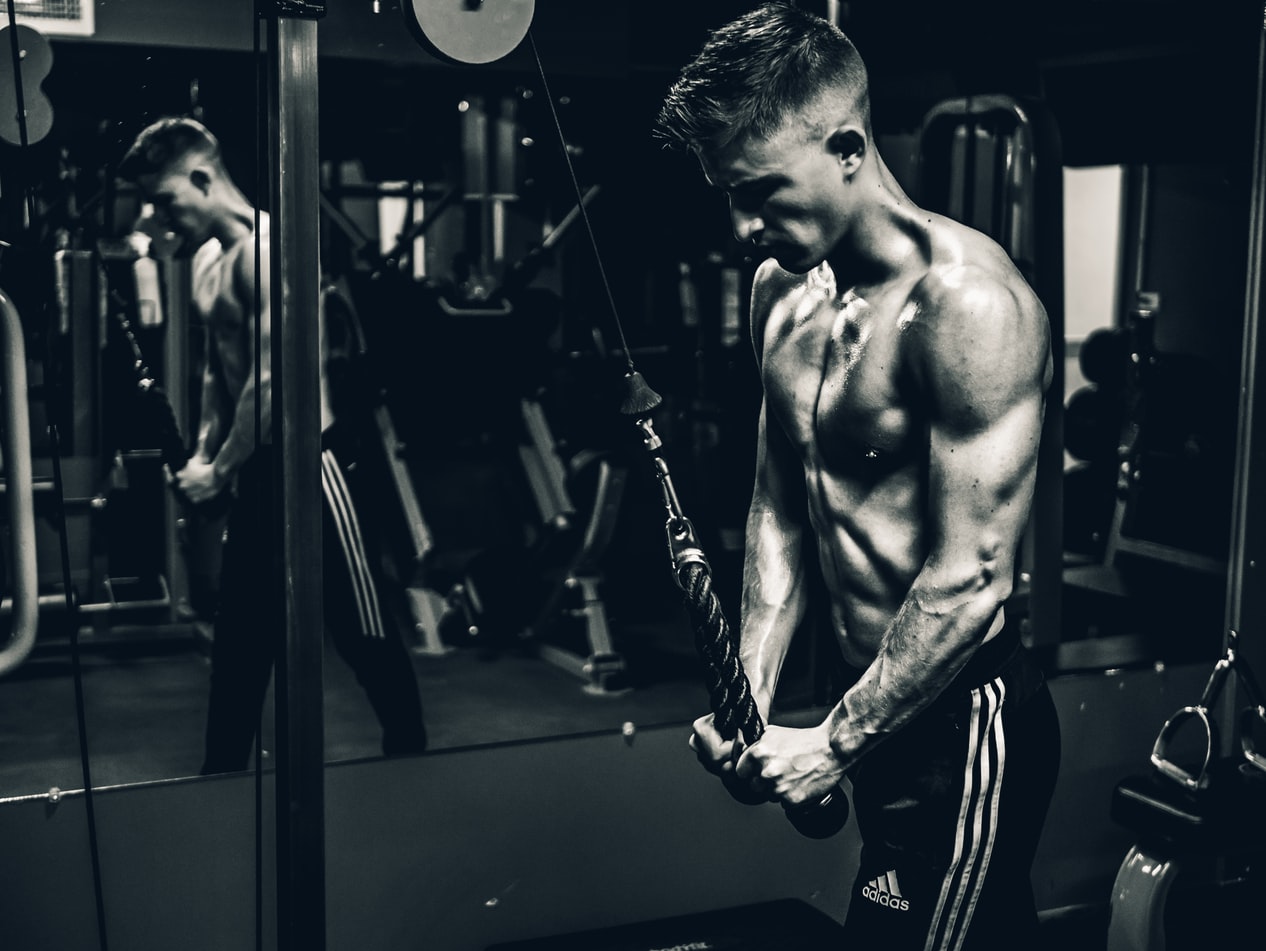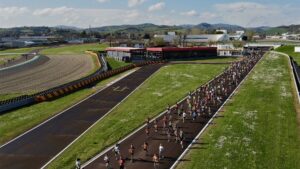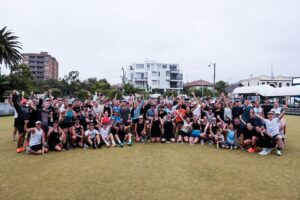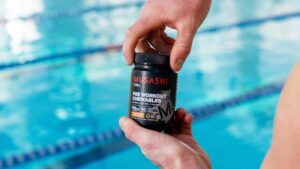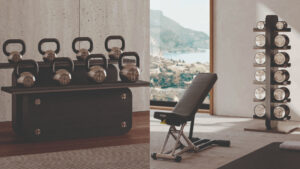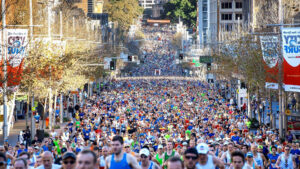You’ll quite find literally millions of articles and videos online claiming to have you looking like a Hemsworth or Jackman in just a few easy steps. Everything from your Mike Chang’s six-pack shortcuts to whatever flavour-of-the-month fitness routine is trending is at the time you hit up Google.
But do you want to find out how to actually get ripped in 2020?
According to the brilliant fitness minds over at 98 Riley Street, it all comes down to the “Four Pillars of Performance.”
- Diet
- Relationships
- Cognitive
- Physical
More specifically, it comes down prioritising consistent, functional training to build strength first. Not just focusing on looking good in your bathroom mirror.
“We don’t care about aesthetics – aesthetics come later,” says 98 Riley Street Program Director and trainer, Kev Toonen.
Toonen has quite the unique CV in this realm, beyond your usual Diploma of Exercise Science and fitness coaching qualifications. Having served some eighteen years in the Australian military, five of those years were spent managing a high-performance fitness program tailored to the elite members of Special Forces.
Currently, Toonen sits on the board for the Tactical Strength & Conditioning Association in Australia, presenting to police, military, as well as strength and conditioning coaches across the country.
“If you want to train like the best, we make you train like the best.”
And this isn’t just another throwaway tagline. To date, 98 Riley trains members of the Wallabies, All Blacks, and Hollywood actors such as Jai Courtney and Russell Crowe – the latter of whom initially owned 98 Riley Street’s physical location in Darlinghurst (which he used as his personal gym).
https://www.instagram.com/p/B7zRXpRp64Q
Diet
Abs are made in the gym and the kitchen. Much of the end result starts with what you put in your body on a day-to-day basis.
“Correct nutrition is critical for not only overall fitness but also for performance, recovery, preventing injury and illness, as well as improving body composition,” says Stephanie Gobbo, clinical nutritionist and naturopath (BHSc) at Willow Urban Retreat.
“You need an adequate amount of daily protein consumed through your daily diet in order to develop good quality muscle mass. The type of protein you chose to eat can also determine your energy levels and inflammation levels.”
Of course, it’s easy to get swept up in the seemingly endless stream of new diets these days that all impossibly purport to deliver “guaranteed results.” So just how do you decide what diet to go with?
“Three modern diets discussed a lot are the Paleo Diet, the Vegan Diet, and the Keto Diet. All three contradict each other in regards to their nutritional guidelines. However, each has proven scientific benefits if adhered to in the correct way to develop muscle mass and improve fitness. Many elite athletes are now sourcing their protein from plant bases which are just as effective for developing muscle mass as animal protein and in many cases, less inflammatory to the body.”
“The type of diet you should be following is determined by the definition of the physical activity you are doing. Aerobic or endurance exercise has a very different diet plan and nutritional needs compared with strictly strength and weight training.”
In terms of general dietary prescriptions for those looking to sculpt the best version of themselves from the current block of marble, here are three key pieces of advice Gobbo recommends:
- “The forty-five minutes post-exercise is the most important nutritional time of the day. This is when we want to enhance glycogen recovery, rebalance electrolytes, and include protein for muscle recovery.”
- “The top diet barriers for toning the body are refined sugars, excess table salt, fast food, excess alcohol, and excess caffeine. Try to limit these for the best success.”
- “If you are not getting your desired results, it’s a good idea to see a nutritionist to create a diet plan for you. Nutritionists can also recommend cleaner protein powders or performance supplements that aren’t filled with additives, hidden sugars, fillers, and flavourings.”
https://www.instagram.com/p/Bz1ZtbIA6mO
Relationships
Personal development and personal fitness actually extend to the social aspects of one’s life. And by that we mean relationships play a role in the pursuit of an improved fitness lifestyle, with the rise of group fitness franchises such as F45 and CrossFit. Relationships also subsequently become influenced by the achievement of an improved (and more efficient) fitness lifestyle.
“The answer is complex, but depending on the previous experiences and personality of the individual – the increased social element can impact motivation for a variety of reasons – such as ego, extraversion, sociability, loneliness,” says Dr Patsy Tremayne, performance psychologist and professional speaker.
“We are pack animals and many of us like to do things together. It can be off-putting for an unfit individual to be in a group of really fit people, and vice versa. The personality of the trainer leading the group is often key to increased attendance.”
Yet another mission at hand the gym has been endeavouring towards is helping people continually achieving results without having to dig too far into the reserves of their outside lives, compromising other parts of their every day, or sacrificing any more than necessary to make up the difference and so forth.
“You tend to bury yourself too deep, too hard down one way, you follow this sort of dogmatic approach of, “I can only eat this, I can only touch that, I can only train this way”,” says Toonen.
“Which doesn’t allow you to live the rest of your life. You’re going to alienate yourself from friends, family, stop yourself from being able to go out for dinner. It controls too much of your life.”
“By engaging in good training… you just tend to look better, and when you look better, you feel better, you carry yourself better, you’re a better person at work, you’re a better person at home.”
Toonen elaborates on how the positive outlook derived from this level of health “naturally floods” into the rest of your life. It becomes quite apparent that you cannot be solely focused, attentive, and educated in one area without seeing any benefit bleed into other facets of your life.
“And that’s why the Four Pillars of Performance exist… They uphold you as a person.”
https://www.instagram.com/p/B6lp83uJGnE
Cognitive
The mentality required for approaching improved fitness is a simple one – act with intent. As opposed to acting on whims that change with the tides. You need to outline measurable goals, as well as understand your own motivations.
“Random to me is dumb. Because you’re shooting in the dark. You need to know what you want and why you want it,” says Toonen.
“So if you don’t have an intent for every session, how do you know if you’ve achieved anything whatsoever? Is my aim to burn calories versus is my aim to get stronger, fitter, and faster. The intent is, “How do I become the most athletic version of myself?”
“And we also know that mentally, when you push yourself through another plateau or boundary, not only do we become physically stronger, we become mentally more resilient.”
In time, your brain chemistry and day-to-day psychology will irrevocably alter. As Dr Tremayne tells us, the routine of strenuous exercise eventually becomes second nature over a prolonged period of exposure. In other words, repetition will help you forge the right tools to get the job done.
“Achieving peak fitness benefits the brain in several ways,” says Dr Tremayne.
“The brain likes repetition, and the energy required by the brain decreases as repetitions become habitual. This also means that over time, the attention required for a task is less and that attention can be utilised elsewhere. This is beneficial in the short and long term.”
“Essentially, the requirements to maintain peak fitness becomes habitual. One doesn’t have negative or self-sabotaging thoughts about doing exercise – one just does it!”
In terms of general advice as prescribed by the good doctor on the long and rewarding journey to a better you, this is what she had to say:
- “Start small, know why you’re doing a particular exercise, and what the benefits are for you.”
- “Keep a record of your attendance, your repetitions, your progress. Use a fitness tracker or heart rate monitor if this would increase your motivation.”
- “You want to be consistent and regular, and increase the intensity slowly. Be patient. Achieving peak fitness doesn’t happen overnight.”
https://www.instagram.com/p/B5GUS3pJHXC
Physical
If there’s one thing we want you to walk away from this article with, it’s the fact that there are simply no shortcuts with fitness. No magic fruits. No miracle routines. The price is a hard currency of sweat and discipline. To see the rewards of the work, one must first put in the work – a sentiment Kev Toonen is all too happy to echo from now until the end of time.
“Eight weeks, six weeks, six-minute abs, all that type of stuff is a really easy way for someone to make money off uneducated people… There’s so much shit that gets flooded into the market, do we really believe these days I can get fit in three weeks?” says Toonen.
“We know the physiological response takes four to six. We know training needs to elicit a certain response so the muscles get fatigued, they get shocked, they get stronger, and that’s what happens. We know that because that’s what science tells us.”
“I don’t believe people are stupid, I just think they don’t know where to go. I don’t want to bullshit people… we don’t want to bullshit people.”
Yet again, it is worth emphasising that training to obtain better physical aesthetics is a zen-like journey; in that your goal should not be to obtain better physical aesthetics in order to obtain better physical aesthetics. Instead, you should always prioritise function and tangible fitness first and foremost.
“We’re talking about getting stronger so you can complete a task with the most amount of ease. Aesthetics have nothing to do with it because we know if you eat well, sleep well, and train right – aesthetics will just come. That’s just a byproduct of good training.”
In terms of the physical side of things, Toonen has much to say and an entire myriad of concepts to offer when it comes to fitness philosophy. Here’s what he believes everyone needs to hear first and foremost:
- “Consistency is key. We talk about shifting dirt, basically. Some days you’ll shift a lot. Some days you’ll shift a little. Some days it’s easy. Some days it’s hard. You want to make sure you shift a certain amount of dirt over a period of time. As opposed to going really hard for two weeks, and then letting it go. With consistency comes discipline as well.”
- “The three indicators of mortality are grip strength, leg strength, and foot speed… Speed and strength training seems to be better for your ligaments, better for your tendons, your bone density, your overall health. If you can’t grip something – it doesn’t matter how strong you are.”
- “Always go with intent. Know what you’re going to do. Know what outcomes you’re supposed to have in the end.”
